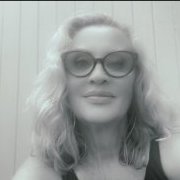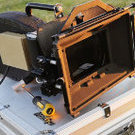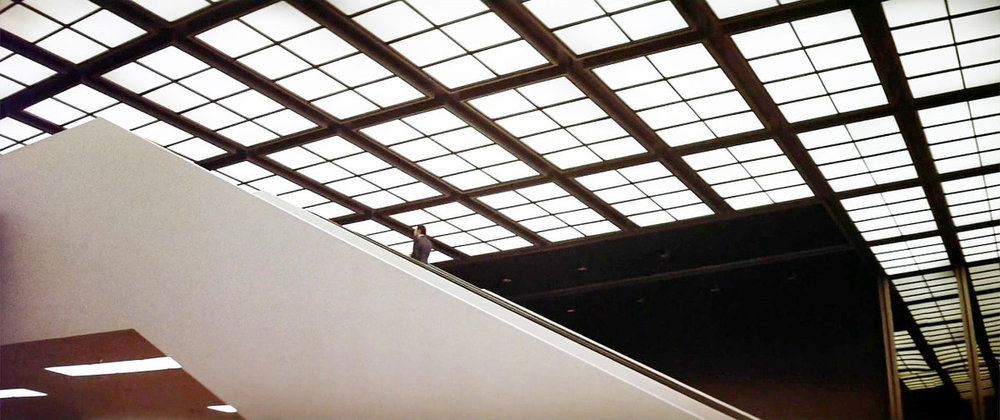
Marcos Cooper
Basic Member-
Posts
38 -
Joined
-
Last visited
Profile Information
-
Occupation
Student
-
Location
Tri-coastal
Recent Profile Visitors
3,299 profile views
-
Bell & Howell Eyemo pentax M42 lens adapter
Marcos Cooper replied to Stefan Fischer's topic in Cine Marketplace
Hello Stefan Do you have a way to make an adapter to allow use of Eyemo lenses on other cameras? I'm hoping to find a way to mount a Baltar to a Nikon focusing bellows. Thanks -
I can't remember the last show I saw with a beautiful audience-wowing pan or sudden scene-stopping tilt. And with all the gimbals, and sliders, and ever-more intricate computer-controlled remote camera heads available does it make sense to bother with a fluid head on sticks anymore? Or are styles of camera movement cyclical and we'll see cinematographers dust off their Vintens and O'Connors for a renaissance of classic camera moves? Or am I just not very observant and can't see that fluid head moves are as common as they ever were?
- 18 replies
-
- 1
-

-
- tripod
- fluid head
-
(and 2 more)
Tagged with:
-
How does cinematographer Peter Suschitzky manage to keep the audience's attention on DeNiro and Streep In 1984's Falling in Love despite shooting them against the busiest backgrounds in Manhattan filled with endless waves of moving people? He's shooting the two most watchable actors of their generation so that's half the battle...but what techniques is he using to isolate them? He's not emptying out the backgrounds, in the Manhattan sequences it's the opposite, there's visual clutter everywhere. Any thoughts?
-
I lucked into a 100mm ƒ/2.3 Baltar at a charity shop and while the exterior and iris seem fine, the glass is dusty and likely has fungus—so what do I do now? I'm in Florida, is there a lens expert down here that people like? Should I take it directly to one of the specialists in Hollywood? Can I take it apart myself and clean it out? All the packages I've received from Fedex and UPS lately have been pretty much destroyed so I don't really feel like sending it across the country is a good idea right now. Also, what lens mount is this? The lens doesn't seem to have a focusing module, so I assume I'll need an adapter to use it on my mirrorless Nikons. Is adaptation even possible? Thank you for your help.
-
Inset shots make editors and audiences very happy but they seem to drive directors, actors abd everyone else crazy. I try to group them so that I’m shooting A bunch of them at one time but I always feel like I’m ruining the party.. Is there a better or worst time in the day to shoot them? Is it better to shoot them in the morning when people are in good moods? Or wait until the end of the day when everyone is too exhausted to fight with you about it? Does someone have an optimal strategy for this?
- 2 replies
-
- cutaway
- inset shot
-
(and 1 more)
Tagged with:
-
Your definition of "Quality of Light"
Marcos Cooper replied to Stephen Sanchez's topic in General Discussion
The purpose of light in motion pictures is to create and sustain the illusion that the audience is looking into a three-dimensional world. Any use of lighting instruments, shadow, and color that contributes to that illusion is good lighting. Unless it is intentional, any use of light that shatters the illusion is bad lighting -
Reflected meters are like kangaroos with ADHD, powerful but all over the place and hard to work with. Incident meters are like an old friend who will always tell you the truth even if it hurts. An incident meter cannot be fooled by extra dark or extra bright objects in the scene. With reflective meters it happens all the time and you have to learn to work around that weakness which takes time and experience. The classic example is a Caucasian bride in a white dress standing next to a Black groom in a black tuxedo. If use a reflected meter neither will be correctly exposed. Scenes with big areas of white sky also fool reflected meters. The problem with spot meters is that you’re depending on the easily fooled human eye to choose what to point the meter at. It works well if, like Ansel Adams, you shoot outdoors in locations you’re familiar with or in studios. Incident meters just tell you what is happening without any interpretation. Then it’s up to you to adjust the lights, prop colors, makeup tones, and scenery colors to create the tonal relationships you want.
-
If I understand correctly, you send out color bars from the camera so you can adjust your monitor to show a fairly accurate representation of what the camera is seeing. Yes? Or is there more to it? The next question becomes: do the color bars being output from my camera reflect the adjustments I've made to settings like knee and pedestal. And how about custom picture profiles or LUTs in use, will those be reflected in the color bar output? Or are bars generated entirely separately from the sensor?
-
Hard Light, Women, And Brian DePalma
Marcos Cooper replied to Marcos Cooper's topic in Lighting for Film & Video
Fantastic info. And thanks for sharing the shot from "The Love Witch." Beautiful work. Given that it was the 80s, what lighting instruments would they have used as key lights for their stars? (And what was used on "Love Witch"?) A closeup of Michelle Pfeiffer, for instance. Would she be with something like a single fresnel? For reference, "Scarface" was shot on Eastman 250T 5293, according to IMDB. And can we assume that the makeup was chosen to eliminate shine? -
How do you make women look beautiful with hard light in the Steve Burum/John Alonzo/Brian DePalma style? Watching movies like Scarface, the shadows are incredibly hard when they appear but the women look like goddesses. What technique is being used. On the Alec Baldwin podcast Brian DePalma was complaining that no one lights women properly and then he said this: "What I think is terrible now with all these streaming movies where they all shoot digitally where it's all with this bounced light and everybody looks like, excuse the expression, (a word that rhymes with quit), it's very dispiriting." So I'm tossing all my silks and muslin and scrimmery but what do I do now?
-
What kind of lights are these
Marcos Cooper replied to Max Moosbrugger's topic in Lighting for Film & Video
The CineMeter II app for iPhone will give you a fairly accurate reading of the color temp of lights. Maybe not accurate enough to use for setting your camera but it can definitely tell you the color of the lights. -
The Parallax View is an extraordinary film, of course, but a lot of the shots are stately, grand, geometric, still, and long in a way that seems very different from what we see today. So the question is: If someone were to remake The Parallax View with new actors and updated costumes, sets, and lighting but followed Gordon Willis shot list, would audiences would enjoy or understand the extraordinarily wide shots, long takes, and mostly static camera? And would a studio release it? The wides look like this. The semiotics are all about tiny human figures being overwhelmed by the immense buildings and natural world that holds them prisoner.







